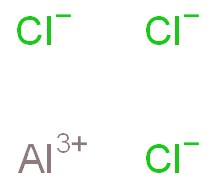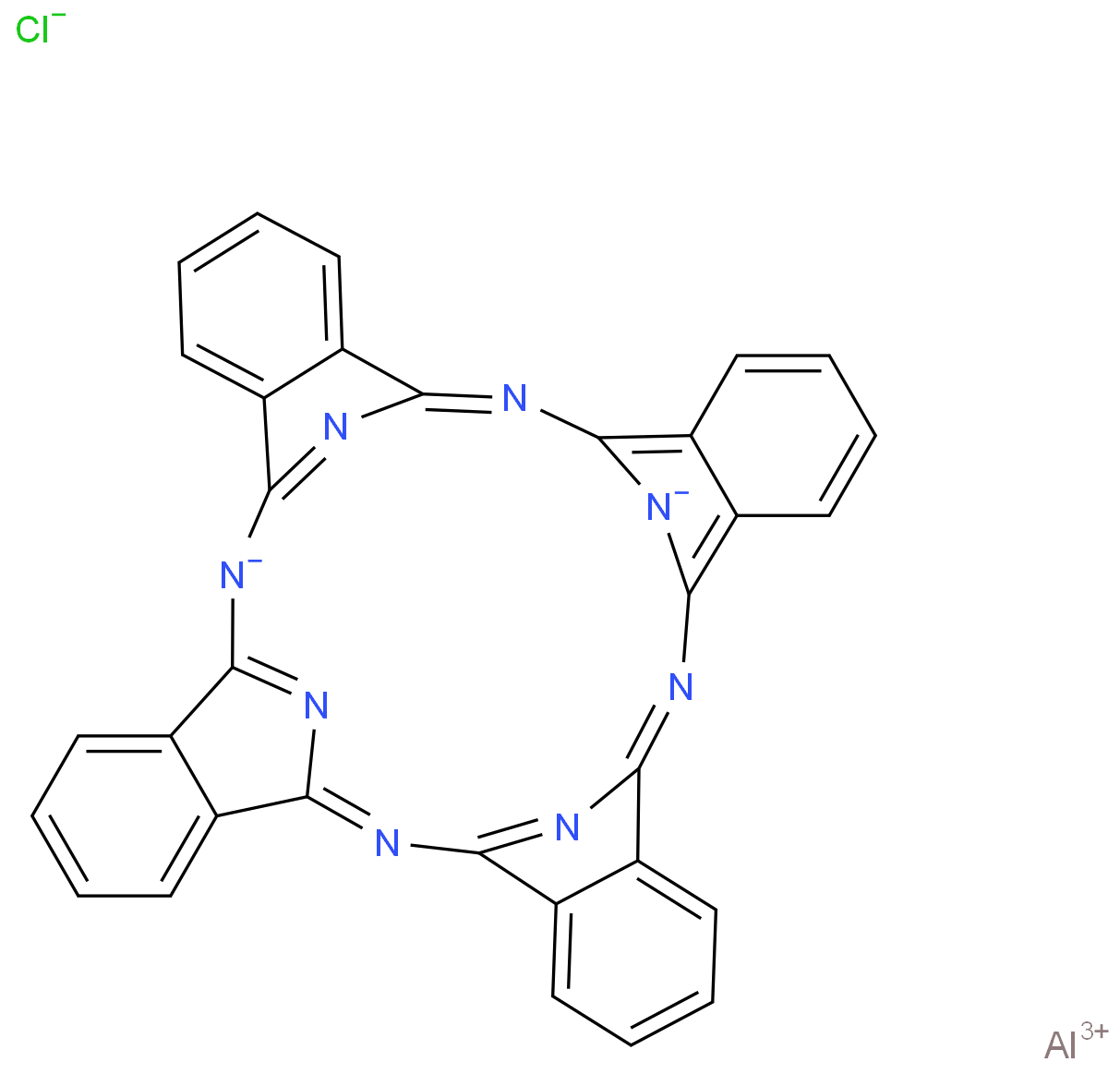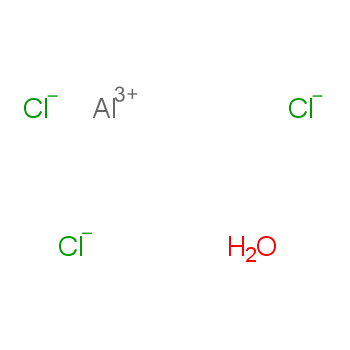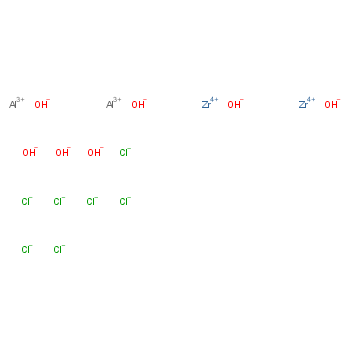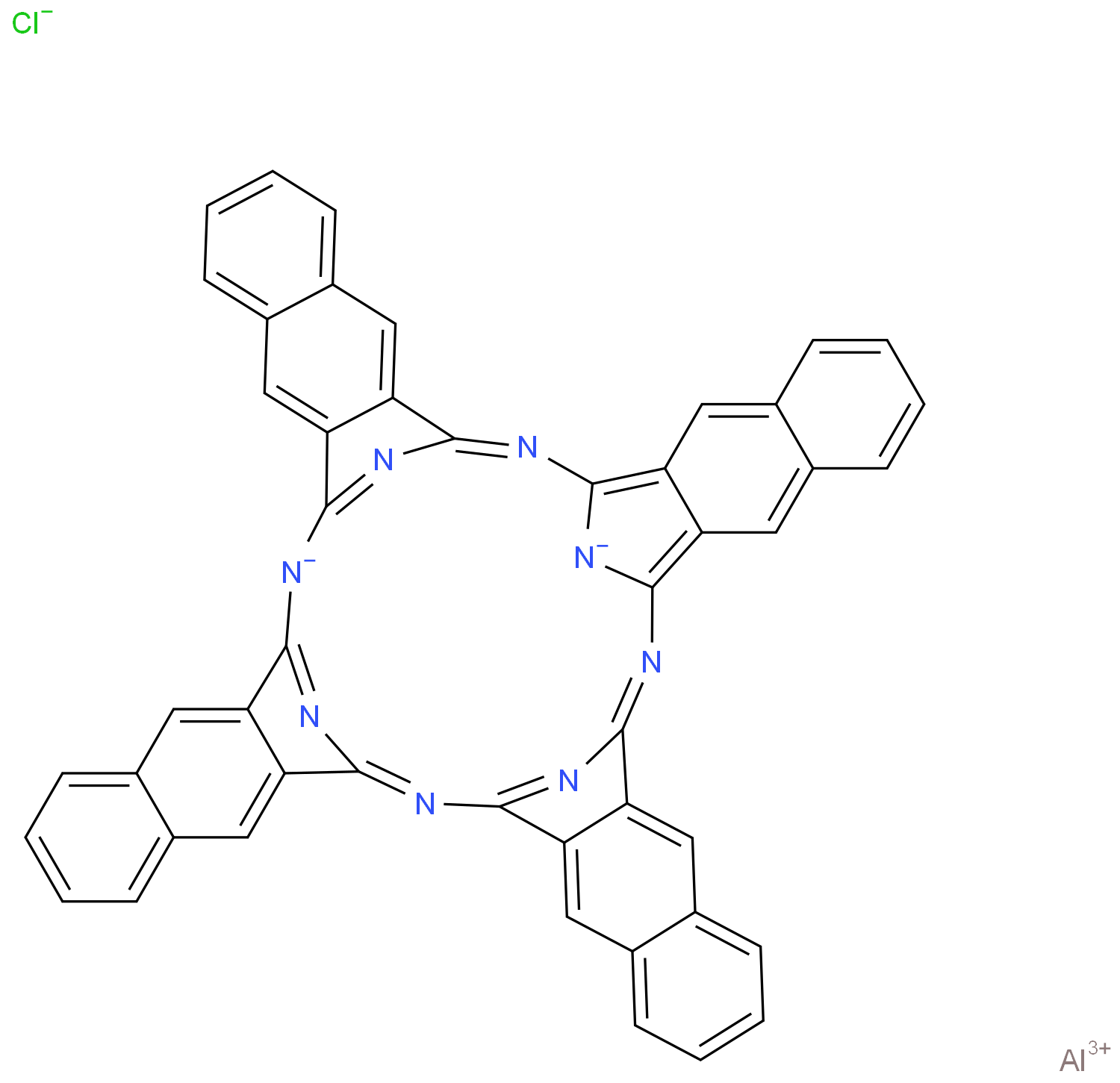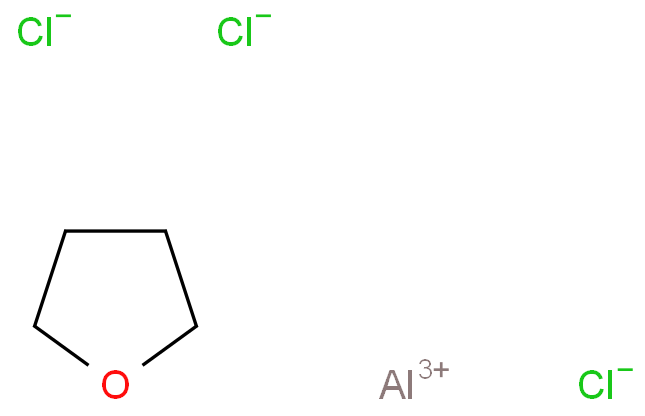Aluminum chloride
- Iupac Name:aluminum;trichloride
- CAS No.: 7446-70-0
- Molecular Weight:133.332
- Modify Date.: 2022-11-10 21:59
- Introduction:
Aluminum chloride, with the chemical formula AlCl3 and CAS registry number 7446-70-0, is a compound known for its versatile applications in various industries. This white crystalline solid is highly soluble in water and exhibits strong Lewis acid properties. Aluminum chloride is commonly used as a catalyst in organic synthesis, particularly in Friedel-Crafts reactions. It is also utilized in the production of aluminum metal, as a coagulant in water treatment processes, and as an ingredient in antiperspirants. Additionally, aluminum chloride finds applications in the pharmaceutical industry, where it is used as an astringent and antiperspirant agent. This compound has been extensively studied for its potential antimicrobial and antitumor properties. Overall, aluminum chloride is an important compound with diverse uses in different fields.
View more+
1. Names and Identifiers
- 1.1 Name
- Aluminum chloride
- 1.2 Synonyms
Aluminium chloride Aluminum chloride anhydrous ALUMINUM CHLORIDE, ANHYDROUS, REAGENTALUMINUM CHLORIDE, ANHYDROUS, REAGENTALUMINUM CHLORIDE, ANHYDROUS, REAGENT Aluminum trichloride test solution(ChP) aluminumchloridesolutions aluminumtrichloride,anhydrous aluminumtrichloridesolutions Anhydrol forte EINECS 231-208-1 MFCD00003422 Хлорид алюминия, Алюминий хлористый безводный, Aluminum trichloride, Aluminum chloride anhydrous, Trichloroaluminum Хлорид алюминия, Алюминий хлористый безводный, Aluminum trichloride, Aluminum chloride anhydrous, Trichloroaluminum
Производитель: Alfa Aesar - Великобритания
- View all
- 1.3 CAS No.
- 7446-70-0
- 1.4 CID
- 24012
- 1.5 EINECS(EC#)
- 231-208-1
- 1.6 Molecular Formula
- AlCl3 (isomer)
- 1.7 Inchi
- InChI=1S/Al.3ClH/h;3*1H/q+3;;;/p-3
- 1.8 InChIkey
- VSCWAEJMTAWNJL-UHFFFAOYSA-K
- 1.9 Canonical Smiles
- [Al](Cl)(Cl)Cl
- 1.10 Isomers Smiles
- [Al](Cl)(Cl)Cl
2. Properties
- 2.1 Density
- 2.44
- 2.1 Melting point
- 194℃
- 2.1 Boiling point
- 180℃
- 2.1 Flash Point
- 88 °C
- 2.1 Precise Quality
- 131.88800
- 2.1 PSA
- 0.00000
- 2.1 logP
- 2.06850
- 2.1 Solubility
- H2O: soluble
- 2.2 Appearance
- powder
- 2.3 Storage
- work with this substance should be conducted in afume hood, and impermeable gloves should be worn at all times when handling AlCl3.Aluminum chloride should be stored in sealed containers under an inert atmosphere in a cool,dry place. Care should be taken in opening containers of this compound because of thepossibility of the buildup of HCl vapor from hydrolysis with traces of moisture.
- 2.4 Chemical Properties
- Aluminum chloride is a noncombustible but highly reactive whitish-gray, yellow, or green powder or liquid. Strong, acidic, irritating odor like hydrochloric acid.The vapor consists of double molecules Al2Cl6 . Soluble in water.
- 2.5 Color/Form
- White when pure; ordinarily gray or yellow to greenish
White, hexagonal crystals or powder
White or colorless hexagonal deliquescent or moisture sensitive plates
- 2.6 Flammability and Explosibility
- Aluminum chloride is not flammable but reacts violently with water, so firesinvolving this substance should be extinguished with carbon dioxide or drychemicals. Toxic fumes (HCl and reaction products) can be released during fires.
- 2.7 Odor
- Hydrogen chloride odor detectable when exposed to moist air
- 2.8 PH
- 2.4 (100g/l, H2O, 20℃)
- 2.9 Physical
- COLOURLESS-TO-WHITE POWDER. TURNS GREY-TO-YELLOW ON EXPOSURE TO MOISTURE.
- 2.10 Water Solubility
- 180°C
- 2.11 Stability
- Stable, but reacts violently with water. Prolonged storage may lead to pressure build-up - vent container periodically. Incompatible with alcohols and a variety of other materials (see complete MSDS sheet for full list).
- 2.12 StorageTemp
- Store below +30°C.
3. Use and Manufacturing
- 3.1 Potential Exposure
- It is used as ethylbenzene catalyst, dyestuff intermediate, and detergent alkylate; in making other chemicals and dyes, astringents, deodorants, in the petroleum refining, and the rubber industries
- 3.2 Purification Methods
- Sublime it several times in an all-glass system under nitrogen at 30-50mm pressure. It has also been sublimed in a stream of dry HCl and has been subjected to a preliminary sublimation through a section of granular aluminium metal [for manipulative details see Jensen J Am Chem Soc 79 1226 1957]. It fumes in moist air.
- 3.3 Shipping
- UN1726 Aluminum chloride, anhydrous, Hazard class: 8; Labels: 8-Corrosive material. UN2581 Aluminum chloride solution, Hazard class: 8; Labels: 8-Corrosive material
- 3.4 Usage
- Aluminum chloride has extensive commercial applications. It is used primarily in the electrolytic production of aluminum. Another major use involves its catalytic applications in many organic reactions, including Friedel-Crafts alkylation, polymerization, isomerization, hydrocracking, oxidation, decarboxylation, and dehydrogenation. It is also used in the production of rare earth chlorides, electroplating of aluminum and in many metal finishing and metallurgical operations.
- 3.5 Waste Disposal
- May be sprayed with aqueous ammonia in the presence of ice and, when reaction is complete, flushed down drain with running water. Aluminum chloride Preparation Products And Raw materials Raw materials
4. Safety and Handling
- 4.1 Symbol
- GHS05;GHS06;GHS08;
- 4.1 Hazard Codes
- C,Xi,T
- 4.1 Signal Word
- DANGER
- 4.1 Risk Statements
- R34
- 4.1 Safety Statements
- S28;S45;S7/8
- 4.1 Exposure Standards and Regulations
- Drug products containing certain active ingredients offered over-the-counter (OTC) for certain uses. A number of active ingredients have been present in OTC drug products for various uses, as described below. However, based on evidence currently available, there are inadequate data to establish general recognition of the safety and effectiveness of these ingredients for the specified uses: Aluminum chloride is included in antiperspirant drug products.
- 4.2 Packing Group
- II
- 4.2 Fire Hazard
- Behavior in Fire: Reacts violently with water used in extinguishing adjacent fires
- 4.3 Other Preventative Measures
- Remove contaminated clothing and shoes. Flush affected areas with plenty of water.
If material not of fire and not involved in fire: Keep material out of water sources and sewers. Build dikes to contain flow as necessary. Attempt to stop leak if without undue personnel hazard.
Personnel protection: Keep upwind. Avoid breathing vapors. ... Avoid bodily contact with the material.
SRP: The scientific literature for the use of contact lenses in industry is conflicting. The benefit or detrimental effects of wearing contact lenses depend not only upon the substance, but also on factors including the form of the substance, characteristics and duration of the exposure, the uses of other eye protection equipment, and the hygiene of the lenses. However, there may be individual substances whose irritating or corrosive properties are such that the wearing of contact lenses would be harmful to the eye. In those specific cases, contact lenses should not be worn. In any event, the usual eye protection equipment should be worn even when contact lenses are in place.
Work clothing that becomes wet or significantly contaminated should be removed and replaced. /Aluminum (soluble salts and alkyls, as Al)/
Workers whose clothing may have become contaminated should change into uncontaminated clothing before leaving the work premises. /Aluminum (soluble salts and alkyls, as Al)/
The worker should immediately wash the skin when it becomes contaminated. /Aluminum (soluble salts and alkyls, as Al)/
SRP: Contaminated protective clothing should be segregated in such a manner so that there is no direct personal contact by personnel who handle, dispose, or clean the clothing. Quality assurance to ascertain the completeness of the cleaning procedures should be implemented before the decontaminated protective clothing is returned for reuse by the workers. Contaminated clothing should not be taken home at end of shift, but should remain at employee's place of work for cleaning. - View all
- 4.4 Hazard Class
- 8
- 4.4 Hazard Declaration
- H301 + H311 + H331; H314; H351; H360F; H372; H412
- 4.4 Cleanup Methods
- Environmental considerations: Land spill: Cover solids with a plastic sheet to prevent dissolving in rain or fire fighting water. Neutralize with agricultural lime (CaO), crushed limestone (CaCO3) or sodium bicarbonate (NaHCO3).
Environmental considerations: Water spill: Remove trapped material with suction hoses.
- 4.5 DisposalMethods
- Aluminum compounds are treated under anhydrous conditions to prevent violent reactions, recover solvent, and form Al compounds suitable for landfill by reaction with anhydrous hydrolysis agent, eg calcium hydroxide. /Aluminum compounds/
SRP: The most favorable course of action is to use an alternative chemical product with less inherent propensity for occupational exposure or environmental contamination. Recycle any unused portion of the material for its approved use or return it to the manufacturer or supplier. Ultimate disposal of the chemical must consider: the material's impact on air quality; potential migration in soil or water; effects on animal, aquatic, and plant life; and conformance with environmental and public health regulations.
Cover any spills with sufficient amounts of sodium bicarbonate. Remove the mixture into a container such as a fiber drum, plastic bag or carton box for easy disposal in an incinerator, and dispose by burning in a furnace.
- 4.6 DOT Emergency Guidelines
- If ... THERE IS NO FIRE, go directly to the Table of Initial Isolation and Protective Action Distances /(see table below)/ ... to obtain initial isolation and protective action distances. IF THERE IS A FIRE, or IF A FIRE IS INVOLVED, go directly to the appropriate guide /(see guide(s) below)/ and use the evacuation information shown under PUBLIC SAFETY. /Aluminum chloride, anhydrous/ Table of Isolation and Protective Action Distances for Aluminum chloride, anhydrous (when spilled in water)
Small Spills (from a small package or small leak from a large package) -------------------- First ISOLATE in all Directions 30 meters (100 feet) Then PROTECT persons Downwind during DAY: 0.2 kilometers (0.1 miles) Then PROTECT persons Downwind during NIGHT: 0.7 kilometers (0.5 miles) ==================== Large Spills (From a large package or from many small packages) -------------------- First ISOLATE in all Directions 120 meters (400 feet) Then PROTECT persons Downwind during DAY: 1.2 kilometers (0.7 miles) Then PROTECT persons Downwind during NIGHT: 4.5 kilometers (2.8 miles)
Table of Water-Reactive Materials Which Produce Toxic Gases /Aluminum chloride, anhydrous/ Materials Which Produce Large Amounts of Toxic-by-Inhalation (TIH) Gas(es) When Spilled in Water
Name of Material TIH Gas(es) Produced Aluminum chloride, anhydrous Hydrogen chloride (HCl)
/GUIDE 137: SUBSTANCES - WATER-REACTIVE - CORROSIVE/ Health: CORROSIVE and/or TOXIC; inhalation, ingestion or contact (skin, eyes) with vapors, dusts or substance may cause severe injury, burns, or death. Fire will produce irritating, corrosive and/or toxic gases. Reaction with water may generate much heat which will increase the concentration of fumes in the air. Contact with molten substance may cause severe burns to skin and eyes. Runoff from fire control or dilution water may cause pollution. /Aluminum chloride, anhydrous/
/GUIDE 137: SUBSTANCES - WATER-REACTIVE - CORROSIVE/ Fire or Explosion: ... Some of these materials may burn, but none ignite readily. May ignite combustibles (wood, paper, oil, clothing, etc.). Substance will react with water (some violently), releasing corrosive and/or toxic gases. Flammable/toxic gases may accumulate in confined areas (basement, tanks, hopper/tank cars etc.). Contact with metals may evolve flammable hydrogen gas. Containers may explode when heated or if contaminated with water. Substance may be transported in a molten form. /Aluminum chloride, anhydrous/
/GUIDE 137: SUBSTANCES - WATER-REACTIVE - CORROSIVE/ Public Safety: CALL Emergency Response Telephone Number ... . As an immediate precautionary measure, isolate spill or leak area in all directions for at least 50 meters (150 feet) for liquids and at least 25 meters (75) feet for solids. Keep unauthorized personnel away. Stay upwind. Keep out of low areas. Ventilate enclosed areas. /Aluminum chloride, anhydrous/
/GUIDE 137: SUBSTANCES - WATER-REACTIVE - CORROSIVE/ Protective Clothing: Wear positive pressure self-contained breathing apparatus (SCBA). Wear chemical protective clothing that is specifically recommended by the manufacturer. It may provide little or no thermal protection. Structural firefighters' protective clothing provides limited protection in fire situations ONLY; it is not effective in spill situations where direct contact with the substance is possible. /Aluminum chloride, anhydrous/
/GUIDE 137: SUBSTANCES - WATER-REACTIVE - CORROSIVE/ Evacuation: ... Fire: If tank, rail car or tank truck is involved in a fire, ISOLATE for 800 meters (1/2 mile) in all directions; also, consider initial evacuation for 800 meters (1/2 mile) in all directions. /Aluminum chloride, anhydrous/
/GUIDE 137: SUBSTANCES - WATER-REACTIVE - CORROSIVE/ Fire: When material is not involved in fire: do not use water on material itself. Small fires: Dry chemical or C02. Move containers from fire area if you can do it without risk. Large Fires: Flood fire area with large quantities of water, while knocking down vapors with water fog. If insufficient water supply: knock down vapors only. Fire involving tanks or car/trailer loads: Cool containers with flooding quantities of water until well after fire is out. Do not get water inside containers. Withdraw immediately in case of rising sound from venting safety devices or discoloration of tank. ALWAYS stay away from tanks engulfed in fire. /Aluminum chloride, anhydrous/
/GUIDE 137: SUBSTANCES - WATER-REACTIVE - CORROSIVE/ Spill or Leak: Fully encapsulating, vapor protective clothing should be worn for spills and leaks with no fire. Do not touch damaged containers or spilled material unless wearing appropriate protective clothing. Stop leak if you can do it without risk. Use water spray to reduce vapors; do not put water directly on leak, spill area or inside container. Keep combustibles (wood, paper, oil, etc.) away from spilled material. Small spills: Cover with DRY earth, DRY sand, or other non-combustible material followed with plastic sheet to minimize spreading or contact with rain. Use clean non-sparking tools to collect material and place it into loosely covered plastic containers for later disposal. Prevent entry into waterways, sewers, basements or confined areas. /Aluminum chloride, anhydrous/
/GUIDE 137: SUBSTANCES - WATER-REACTIVE - CORROSIVE/ First Aid: Move victim to fresh air. Call 911 or emergency medical service. Give artificial respiration if victim is not breathing. Do not use mouth-to-mouth method if victim ingested or inhaled the substance; give artificial respiration with the aid of a pocket mask equipped with a one-way valve or other proper respiratory medical device. Administer oxygen if breathing is difficult. Remove and isolate contaminated clothing and shoes. In case of contact with substance, immediately flush skin or eyes with running water for at least 20 minutes. For minor skin contact, avoid spreading material on unaffected skin. Removal of solidified molten material from skin requires medical assistance. Keep victim warm and quiet. Effects of exposure (inhalation, ingestion or skin contact) to substance may be delayed. Ensure that medical personnel are aware of the material(s) involved and take precautions to protect themselves. /Aluminum chloride, anhydrous/
/GUIDE 154: SUBSTANCES - TOXIC AND/OR CORROSIVE (NON-COMBUSTIBLE)/ Health: TOXIC; inhalation, ingestion, or skin contact with material may cause severe injury or death. Contact with molten substance may cause severe burns to skin and eyes. Avoid any skin contact. Effects of contact or inhalation may be delayed. Fire may produce irritating, corrosive and/or toxic gases. Runoff from fire control or dilution water may be corrosive and/or toxic and cause pollution. /Aluminum chloride, solution/
/GUIDE 154: SUBSTANCES - TOXIC AND/OR CORROSIVE (NON-COMBUSTIBLE)/ Fire or Explosion: Non-combustible, substance itself does not burn but may decompose upon heating to produce corrosive and/or toxic fumes. Some are oxidizers and may ignite combustibles (wood, paper, oil, clothing, etc.). Contact with metals may evolve flammable hydrogen gas. Containers may explode when heated. /Aluminum chloride, solution/
/GUIDE 154: SUBSTANCES - TOXIC AND/OR CORROSIVE (NON-COMBUSTIBLE)/ Public Safety: CALL Emergency Response Telephone Number ... . As an immediate precautionary measure, isolate spill or leak area in all directions for at least 50 meters (150 feet) for liquids and at least 25 meters (75 feet) for solids. Keep unauthorized personnel away. Stay upwind. Keep out of low areas. Ventilate enclosed areas. /Aluminum chloride, solution/
/GUIDE 154: SUBSTANCES - TOXIC AND/OR CORROSIVE (NON-COMBUSTIBLE)/ Protective Clothing: Wear positive pressure self-contained breathing apparatus (SCBA). Wear chemical protective clothing that is specifically recommended by the manufacturer. It may provide little or no thermal protection. Structural firefighters' protective clothing provides limited protection in fire situations ONLY; it is not effective in spill situations where direct contact with the substance is possible. /Aluminum chloride, solution/
/GUIDE 154: SUBSTANCES - TOXIC AND/OR CORROSIVE (NON-COMBUSTIBLE)/ Evacuation: ... Fire: If tank, rail car or tank truck is involved in a fire, ISOLATE for 800 meters (1/2 mile) in all directions; also, consider initial evacuation for 800 meters (1/2 mile) in all directions. /Aluminum chloride, solution/
/GUIDE 154: SUBSTANCES - TOXIC AND/OR CORROSIVE (NON-COMBUSTIBLE)/ Fire: Small fires: Dry chemical, CO2 or water spray. Large fires: Dry chemical, CO2, alcohol-resistant foam or water spray. Move containers from fire area if you can do it without risk. Dike fire control water for later disposal; do not scatter the material. Fire involving tanks or car/trailer loads: Fight fire from maximum distance or use unmanned hose holders or monitor nozzles. Do not get water inside containers. Cool containers with flooding quantities of water until well after fire is out. Withdraw immediately in case of rising sound from venting safety devices or discoloration of tank. ALWAYS stay away from tanks engulfed in fire. /Aluminum chloride, solution/
/GUIDE 154: SUBSTANCES - TOXIC AND/OR CORROSIVE (NON-COMBUSTIBLE)/ Spill or Leak: ELIMINATE all ignition sources (no smoking, flares, sparks or flames in immediate area). Do not touch damaged containers or spilled material unless wearing appropriate protective clothing. Stop leak if you can do it without risk. Prevent entry into waterways, sewers, basements or confined areas. Absorb or cover with dry earth, sand or other non-combustible material and transfer to containers. DO NOT GET WATER INSIDE CONTAINERS. /Aluminum chloride, solution/
/GUIDE 154: SUBSTANCES - TOXIC AND/OR CORROSIVE (NON-COMBUSTIBLE)/ First Aid: Move victim to fresh air. Call 911 or emergency medical service. Give artificial respiration if victim is not breathing. Do not use mouth-to-mouth method if victim ingested or inhaled the substance; give artificial respiration with the aid of a pocket mask equipped with a one-way valve or other proper respiratory medical device. Administer oxygen if breathing is difficult. Remove and isolate contaminated clothing and shoes. In case of contact with substance, immediately flush skin or eyes with running water for at least 20 minutes. For minor skin contact, avoid spreading material on unaffected skin. Keep victim warm and quiet. Effects of exposure (inhalation, ingestion or skin contact) to substance may be delayed. Ensure that medical personnel are aware of the material(s) involved and take precautions to protect themselves. /Aluminum chloride, solution/ - View all
- 4.7 RIDADR
- 275 kg
- 4.7 Fire Fighting Procedures
- If material on fire or involved in fire: Extinguish fire using agent suitable for type of surrounding fire. (Material itself does not burn or burns with difficulty.) Use "alcohol" foam, dry chemical or carbon dioxide. Keep run-off water out of sewers and water sources.
DO NOT use water. Violent reaction may result. Extinguish fire using agent suitable, for surrounding fire. Extinguish adjacent fires with dry chemical carbon dioxide, or foam. Use water spray to keep fire-exposed containers cool.
Stop flow of liquid before extinguishing fire. Use dry chemical or carbon dioxide. DO NOT use water as straight stream directly on spilled material. Water fog can be used to control fire. DO NOT use halogenated extinguishing agents on spilled material. Violent reaction may result. Use water spray to keep fire-exposed containers cool. Fight fire from protected location or maximum possible distance. /Aluminum Alkyls/
- 4.8 FirePotential
- Certain polymerization catalysts, such as aluminum alkyls, react & burn violently on contact with water. /Aluminum alkyls/
Aluminum alkyls are organic aluminum compounds that are highly reactive and dangerous because of spontaneous burning in air. /Aluminum alkyls/
Prophoric material in flammable solvent. Vapors are heavier than air & may travel to a source of ignition & flash back. /Aluminum alkyls/
- 4.9 Safety Profile
- Moderately toxic by ingestion. Experimental teratogenic and reproductive effects. Mutation data reported. The dust is an irritant by ingestion, inhalation, and skin contact. Highly exothermic polymerization reactions with alkenes. Incompatible with nitrobenaenes or nitrobenzene + phenol. Highly exothermic reaction with water or steam produces toxic fumes of HCl. See also ALUMINUM COMPOUNDS, CHLORIDES, and HYDROCHLORIC ACID.
- 4.10 Caution Statement
- P280-P305 + P351 + P338-P310
- 4.10 Formulations/Preparations
- Aluminum chloride-99.8% /grade available/
Liquid aluminum chloride, 32 deg baume, 28% grade
Grade: Technical, CP; NF /National Formulary grade of chemical/. /hexahydrate/
Grade: Technical; reagent /anhydrous/
- 4.11 Incompatibilities
- A strong reducing agent. Contact with air or water forms hydrochloric acid and hydrogen chloride gas. Reaction with water may be violent. Water, alcohol, and alkenes can cause polymerization. Incompatible with nitrobenzene, organic material, and bases. Attacks metal in presence of moisture, forming flammable hydrogen gas.
- 4.12 WGK Germany
- 1
- 4.12 RTECS
- BD0525000
- 4.12 Protective Equipment and Clothing
- Wear special protective clothing and positive pressure self-contained breathing apparatus.
Wear goggles, self-contained breathing apparatus and rubber clothing
Wear appropriate personal protective clothing to prevent skin contact. /Aluminum (soluble salts and alkyls, as Al/
Wear appropriate eye protection to prevent eye contact. /Aluminum (soluble salts and alkyls, as Al)/
Protective clothing and a high standard of training in the necessary precautionary measures are essential for the handling of the materials. /Aluminum alkyls/
- 4.13 Reactivities and Incompatibilities
- ... Will react with water or steam to produce heat, toxic or corrosive fumes of /hydrochloric acid/.
Incompatibilities: alkali hydroxides and carbonates, borax, and lime water precipitates aluminum hydroxide from solution of aluminum chloride. It possesses incompatibilities of chlorides.
Aluminum chloride hydrolyzes in water to aluminum hydroxide & hydrochloric acid.
Incompatable with nitrobenzenes or nitrobenzene and phenol /mixtures/.
When heated in small quantities, volatilizes without melting.
Extremely reactive with air, moisture, and compounds containing active hydrogen... /Alkyl aluminum compounds/
Reacts violently with a broad range of materials including air & water. /Aluminum alkyls/
- 4.14 Skin, Eye, and Respiratory Irritations
- Irritating to eyes, nose and throat. Will burn skin and eyes.
May cause minor irritation to lungs & eyes. /Aluminum (dust or powder)/
Irritation of the eyes has been noted in patients who have been exposed /to aluminum alkyls/. /Aluminum alkyls/
May cause minor irritation to lungs or eyes. /Aluminum (dust or powder)/
- 4.15 Safety
-
Hazard Codes:? C,?
C,? Xi,?
Xi,? T
T
Risk Statements: 36/38-34-62-51/53-48/23/24-40-23/24/25-14?
R36/38:Irritating to eyes and skin.?
R20:Harmful by inhalation.?
R62:Risk of impaired fertility.?
R51/53:Toxic to aquatic organisms, may cause long-term adverse effects in the aquatic environment.?
R48:Danger of serious damage to health by prolonged exposure.?
R23 :Toxic by inhalation.?
R24:Toxic in contact with skin.?
R23/24/25:Toxic by inhalation, in contact with skin and if swallowed.?
R14 :Reacts violently with water.
Safety Statements: 26-45-28-7/8-36/37/39-61-23-28A?
S26: In case of contact with eyes, rinse immediately with plenty of water and seek medical advice.?
S45:In case of accident or if you feel unwell, seek medical advice immediately (show the label whenever possible.)?
S28:After contact with skin, wash immediately with plenty of soap-suds.?
S7:Keep container tightly closed.?
S8:Keep container dry.?
S36/37/39:Wear suitable protective clothing, gloves and eye/face protection.?
S61:Avoid release to the environment. Refer to special instructions / safety data sheets.?
S23:Do not breathe vapour.?
S28:After contact with skin, wash immediately with plenty of soap-suds.
RIDADR: UN 3264 8/PG 3
WGK Germany: 1
RTECS: BD0525000
HazardClass: 8
PackingGroup: II
Hazardous Substances Data: 7446-70-0(Hazardous Substances Data)
- View all
- 4.16 Sensitive
- Moisture Sensitive
- 4.17 Specification
-
?Aluminium Chloride (CAS NO.7446-70-0) is also named as AI3-01917 ; Alluminio(cloruro di) ; Alluminio(cloruro di) [Italian] ; Aluminium trichloride ; Aluminium, (chlorure d') ; Aluminium, (chlorure d') [French] ; Aluminiumchlorid ; Aluminiumchlorid [German] ; Aluminum chloride (1:3) ; Aluminum trichloride ; Aluminum, (chlorure d') ; Aluminum, (chlorure d')[French] ; CCRIS 6871 ; Caswell No. 029 ; Chlorure d'aluminium ; Chlorure d'aluminium [French] ; EPA Pesticide Chemical Code 013901 ; HSDB 607 ; NSC 143015 ; NSC 143016 ; Pearsall ; TK Flock ; Trichloroaluminum ; UNII-LIF1N9568Y?.?Aluminium Chloride (CAS NO.7446-70-0) is yellow to grey solid with a pungent odor. It is corrosive to tissue and toxic by ingestion.?Contact with the skin or eyes in the presence of moisture causes thermal and acid burns. Aluminium Chloride behaves as an acidic salt. It can self-reactive. After long storage in closed containers, explosions often occur upon opening. Can cause ethylene(also other alkenes) to polymerize violently. Causes ethylene oxide to rearrange and polymerize, liberating heat. Can catalyze violent polymerization of allyl chloride. Addition to nitrobenzene containing about 5% phenol caused a violent explosion. Mixtures with nitromethane may explode when organic matter is present. Reacts violently with water if used in extinguishing adjacent fires.
- View all
- 4.18 Toxicity
-
| Organism |
Test Type |
Route |
Reported Dose (Normalized Dose) |
Effect |
Source |
| mouse |
LD50 |
oral |
1130mg/kg (1130mg/kg) |
? |
Gigiena i Sanitariya. For English translation, see HYSAAV. Vol. 30(4), Pg. 16, 1965. |
| mouse |
LD50 |
unreported |
390mg/kg (390mg/kg) |
? |
Gigiena i Sanitariya. For English translation, see HYSAAV. Vol. 43(4), Pg. 12, 1978. |
| rabbit |
LD50 |
skin |
> 2gm/kg (2000mg/kg) |
? |
United States Environmental Protection Agency, Office of Pesticides and Toxic Substances. Vol. 8EHQ-0191-1109, |
| rat |
LD50 |
oral |
3450mg/kg (3450mg/kg) |
BRAIN AND COVERINGS: OTHER DEGENERATIVE CHANGES
GASTROINTESTINAL: OTHER CHANGES
KIDNEY, URETER, AND BLADDER: HEMATURIA |
Science Reports of the Research Institutes, Tohoku University, Series C: Medicine. Vol. 36(1-4), Pg. 10, 1989. |
| rat |
LD50 |
unreported |
315mg/kg (315mg/kg) |
? |
Gigiena i Sanitariya. For English translation, see HYSAAV. Vol. 43(4), Pg. 12, 1978. |
- View all
5. MSDS
2.Hazard identification
2.1 Classification of the substance or mixture
Skin corrosion, Category 1B
2.2 GHS label elements, including precautionary statements
| Pictogram(s) |  |
| Signal word | Danger |
| Hazard statement(s) | H314 Causes severe skin burns and eye damage |
| Precautionary statement(s) | |
| Prevention | P260 Do not breathe dust/fume/gas/mist/vapours/spray. P264 Wash ... thoroughly after handling. P280 Wear protective gloves/protective clothing/eye protection/face protection. |
| Response | P301+P330+P331 IF SWALLOWED: Rinse mouth. Do NOT induce vomiting. P303+P361+P353 IF ON SKIN (or hair): Take off immediately all contaminated clothing. Rinse skin with water [or shower]. P363 Wash contaminated clothing before reuse. P304+P340 IF INHALED: Remove person to fresh air and keep comfortable for breathing. P310 Immediately call a POISON CENTER/doctor/\u2026 P321 Specific treatment (see ... on this label). P305+P351+P338 IF IN EYES: Rinse cautiously with water for several minutes. Remove contact lenses, if present and easy to do. Continue rinsing. |
| Storage | P405 Store locked up. |
| Disposal | P501 Dispose of contents/container to ... |
2.3 Other hazards which do not result in classification
none
6. Synthesis Route
7446-70-0Total: 78 Synthesis Route
8. Other Information
- 8.0 Usage
- Aluminum chloride is used to control excessive sweating. It is commonly used as a catalyst for the halogenation (especially chlorination) of aromatic groups, as well as in the Friedel Crafts reaction. It is also used in the Meerwein-Ponndorf-Verley reduction. It is widely used in the manufacturing of petrochemicals such as alkylbenzene, ethylbenzene, alkyl aryl ketone, ethyl chloride. It is used for making detergents, polymerization and isomerization reactions of hydrocarbons.
- 8.1 Usage
- It is used to control excessive sweating. It is commonly used as a catalyst for the halogenation (especially chlorination) of aromatic groups, as well as in the Friedel Crafts reaction. It is also used in the Meerwein-Ponndorf-Verley reduction. It is widely used in the manufacturing of petrochemicals such as alkylbenzene, ethylbenzene, alkyl aryl ketone, ethyl chloride. It is used for making detergents, polymerization and isomerization reactions of hydrocarbons.
- 8.2 Usage
- Aluminum chloride is used as a catalyst for Friedel-Crafts acylation and alkylation of aromatic compounds. It is one of the most commonly employed Lewis acids for a wide variety of organic transformations. It catalyzes the ene reaction, polymerization and isomerization reactions. For example, it can be used for the synthesis of ethyl benzene which is a precursor for producing polystyrene. It can be used for producing dodecylbenzene, a key intermediate for detergents. It is useful in the production of anthroquinone, the presursor for dyestuffs. It is used in the synthesis of bis (arene) metal complexes, through Fischer-Hafner synthesis. Gattermann-Koch reaction employs aluminum chloride for introducing formyl group onto aromatic rings.
- 8.3 Usage
- It is used as a catalyst for Friedel-Crafts acylation and alkylation of aromatic compounds. It is one of the most commonly employed Lewis acids for a wide variety of organic transformations. It catalyzes the ene reaction, polymerization, and isomerization reactions. For example, it can be used to synthesis ethyl benzene which is a precursor for producing polystyrene. It can be used for producing dodecylbenzene, a key intermediate for detergents. It is useful in the production of anthroquinone, the presursor for dyestuffs. It is used in the synthesis of bis(arene) metal complexes, through Fischer-Hafner synthesis. Gattermann-Koch reaction employs aluminum chloride for introducing formyl group onto aromatic rings.
- 8.4 Merck
- 14,337
- 8.5 Description
- White or light-yellow crystalline solid (or amorphous solid depending on the method of production); odor of HCl; hygroscopic; melts at 190°C at 2.5 atm; sublimes at 181.2°C; density 2.44 g/cm3 at 25°C; decomposes in water evolving heat; soluble in HCl; soluble in many organic solvents, including absolute ethanol, chloroform, carbon tetrachloride and ether; slightly soluble in benzene.

Aluminum chloride is important industrial chemical. Anhydrous Aluminum chloride is used as the catalyst in variety of Friedel-Crafts type of reactions. Large amounts of ethylbenzene are prepared in this way and are used to make styrene.
C6H6 + CH3CH2Cl + AlCl3→C6H5CH2CH3 + H+ + [AlCl4]-
Aluminum chloride is also used in the manufacture of anthraquinone (used in dyestuffs industry) and dodecylbenzene (used to make detergents) and in the isomerisation of hydrocarbons (petroleum industry).
Aluminum chloride reacts vigorously with water and fumes in air. It is used as a catalyst in cracking petroleum and in organic synthesis. - View all
- 8.6 Uses
- Aluminum chloride has extensive commercial applications. It is used primarily in the electrolytic production of aluminum. Another major use involves its catalytic applications in many organic reactions, including Friedel-Crafts alkylation, polymerization, isomerization, hydrocracking, oxidation, decarboxylation, and dehydrogenation. It is also used in the production of rare earth chlorides, electroplating of aluminum and in many metal finishing and metallurgical operations.
- 8.7 Preparation
- Aluminum chloride is made by chlorination of molten aluminum at temperatures between 650 to 750°C;
2 Al + 3Cl2→ 2AlCl3
or by chlorination of alumina (bauxite or clay) at 800°C in the presence of a reducing agent, such as carbon or CO. It can be prepared by similar high temperature chlorination of bauxite in the presence of a chlorinated organic reductant such as CCl4.
A pelletized mixture of clay, lignite and a small amount of NaCl is chlorinated at 900°C, producing gaseous AlCl3 (Toth process). Alternatively, alumina is mixed with about 20% by weight carbon and a small amount of sodium salt. The mixture is chlorinated at 600°C (Bayer process).
In the laboratory, anhydrous AlCl3 can be prepared by heating the metal with dry HCl gas at 150°C. The product sublimes and deposits in the cool air condenser. Unreacted HCl is vented out.
- 8.8 Reaction
- Reacts with calcium and magnesium hydrides in tetrahydrofuran forming tetrahydro aluminates, Ca(AlH4)2; reacts with hydrides of alkali metals in ether forming aluminum hydride;
Hydrolyzes in chilled, dilute HCl forming aluminum chloride hexahydrate, AlCl3?6H2O; reacts violently with water, evolving HCl,
AlCl3 + H2O ——? Al(OH)3 + HCl ↑
- 8.9 Chemical Properties
- Aluminum chloride is a noncombustible but highly reactive whitish-gray, yellow, or green powder or liquid. Strong, acidic, irritating odor like hydrochloric acid.The vapor consists of double molecules Al2Cl6 . Soluble in water.
- 8.10 Uses
- Astringent (topical).
- 8.11 Uses
- A yellowish-white crystalline or granular powder made by passing chlorine gas over alumina in a heated state and collecting the product by sublimation. Aluminum chloride was occasionally used in gold and platinum toning baths.
- 8.12 Uses
- Aluminum chloride is used as a catalyst in many organic reactions.
- 8.13 Definition
- aluminium chloride: A whitishsolid, AlCl3, which fumes in moist airand reacts violently with water (togive hydrogen chloride). It is knownas the anhydrous salt (hexagonal; r.d.2.44 (fused solid); m.p. 190°C (2.5atm.); sublimes at 178°C) or the hexahydrateAlCl3.6H2O (rhombic; r.d.2.398; loses water at 100°C), both ofwhich are deliquescent. Aluminiumchloride may be prepared by passinghydrogen chloride or chlorine overhot aluminium or (industrially) bypassing chlorine over heated aluminiumoxide and carbon. The chlorideion is polarized by the smallpositive aluminium ion and thebonding in the solid is intermediatebetween covalent and ionic. In theliquid and vapour phases dimer moleculesexist, Al2Cl6, in which thereare chlorine bridges making coordinatebonds to aluminium atoms (seeformula). The AlCl3 molecule can alsoform compounds with other moleculesthat donate pairs of electrons(e.g. amines or hydrogen sulphide);i.e. it acts as a Lewis acid. At hightemperatures the Al2Cl6 molecules inthe vapour dissociate to (planar)AlCl3 molecules. Aluminium chlorideis used commercially as a catalyst inthe cracking of oils. It is also a catalystin certain other organic reactions,especially the Friedel–Craftsreaction.
- View all
- 8.14 General Description
-
Aluminum chloride may be manufactured by chlorination of liquid aluminum in ceramic lined reaction vessels at 600-700oC.
9. Computational chemical data
- Molecular Weight: 133.332g/mol
- Molecular Formula: AlCl3
- Compound Is Canonicalized: True
- XLogP3-AA: null
- Exact Mass: 131.888096
- Monoisotopic Mass: 131.888096
- Complexity: 8
- Rotatable Bond Count: 0
- Hydrogen Bond Donor Count: 0
- Hydrogen Bond Acceptor Count: 0
- Topological Polar Surface Area: 0
- Heavy Atom Count: 4
- Defined Atom Stereocenter Count: 0
- Undefined Atom Stereocenter Count: 0
- Defined Bond Stereocenter Count: 0
- Undefined Bond Stereocenter Count: 0
- Isotope Atom Count: 0
- Covalently-Bonded Unit Count: 1
- CACTVS Substructure Key Fingerprint: AAADcQAAAAAGABAAAAAAAAAAAAAAAAAAAAAAAAAAAAAAAAAAAAAAAAAAAAEAAAAAAAAAAAAAAAAAAAAAAAAAAAAAAAAAAAAAAAAAAAAAAAAAAAAAAAAAAAAAAAAAAAAAAAAAAAAAAAAAAAAAAAAAAAAAAA==
10. Question & Answer
-
Aluminum chloride (AlCl3) is a compound that displays characteristics of both ionic and covalent bonding, leading to some ambiguity in its classification. Formed between a metal and non-metal, AlCl3 f..
-
While baking soda is commonly used for indigestion relief, it can be dangerous for long-term use, during pregnancy, or in children. It is an alkaline substance that can neutralize excess stomach acid,..
-
Description Aluminum chloride (AlCl3) is a yellowish or grayish-white crystalline powder with a sharp odor. It is utilized as a chemical intermediate for Aluminum compounds, a catalyst for cracking pe..
-
The reaction between Aluminum chloride and ammonia is a very common chemical reaction. In daily life, this reaction is often used to prepare some chemical reagents and drugs. In industrial production..
11. Recommended Suppliers
-
- Products:Cosmetic Raw Materials,solvents,etc.
- Tel:86-311-66562153
- Email:spring@crovellbio.com
-
- Products:Our company specializes in the research and development of fine chemicals, food additives and pharmaceutical raw materials
- Tel:86-13032687-050
- Email:lily@hbsaisier.cn
-
- Products:Medical Intermediate,Lithium Battery Additive,Organicetc Chemical, Organic Chemical, Paint Chemical and Detergent Chemical etc..
- Tel:0086-0371-55170693
- Email:info@tianfuchem.com
-
- Products:We ZERchem, facing global High-tech pharmaceutical raw materials, high value-added new type intermediates fine chemicals custom synthesis, scale-up production and rare chemicals trade.
- Tel:+86-571-82512721
- Email:sales@zeerrui.com
-
- Products:Export business of hi-tech products such as pharmaceutical materials (APIs), pharmaceutical intermediates, fine chemicals and biochemical reagents, etc.
- Tel:86-571-86465881
- Email:sales9@dingyanchem.com
12. Realated Product Infomation
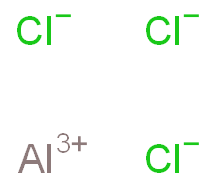

 C,?
C,? Xi,?
Xi,? T
T 




